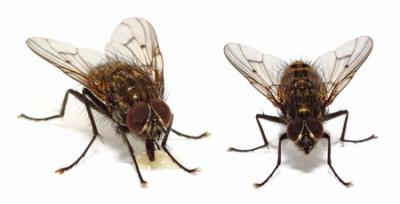
In the event of infestation 999 Pest Control will be able to help you.
Call us on 07775 801190
Diptera
Distribution
House Fly
- The commonest flying pest in buildings. A prolific breeder and feeder among refuse and excrement from which it flies to human food. In a hot summer, the egg to adult life cycle takes only 10 days. Overwinters as a brown pupa.
Bluebottle
- Bluebottles, Greenbottles and Flesh Flies are characterised by their large size, buzzing flight and iridescent sheen. They are attracted to meat and fish product, upon which they lay their eggs (or 'Blow' their maggots) as well as feed.
Cluster fly
- Found commonly throughout Britain this fly will hibernate in buildings emerging in great numbers in early spring. Cluster flies are known to hibernate in vast numbers in lofts and roof voids.
Fruit Fly
- Also known as Vinegar flies, these very small, red-eyed flies have a slow hovering flight with their abdomen hanging downwards. Various species breed among over-ripe fruit, fermenting liquids, peelings, dregs and residues of drinks.
The Stable fly
- A relative of the Housefly the bloodsucking stable fly regularly attacks cattle, horses and humans. Although painful the bite has minimal risk for the transmission of disease in The UK however there is a risk of secondary infection through scratching.
Pest concerns
Flies carry and spread a wide range of serious gastro enteric illnesses and food poisoning organisms including;
- E – Coli
- Salmonella
- Diphtheria
- Cholera and dysentery
- Parasitic worms
- Anthrax
- Tuberculosis
Control measures
There are many different types of flies in Britain and all of them have the potential to be pests. The treatment methods for different flies may vary and include;
- Spraying with insecticides
- The installation of Electric Fly Killers.
- Sticky traps
- Proofing
In the event of infestation 999 Pest Control will be able to help you.
Call us on 07775 801190
